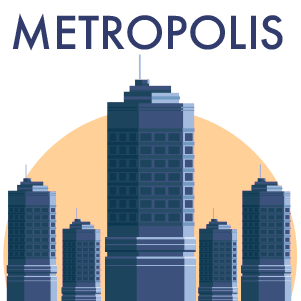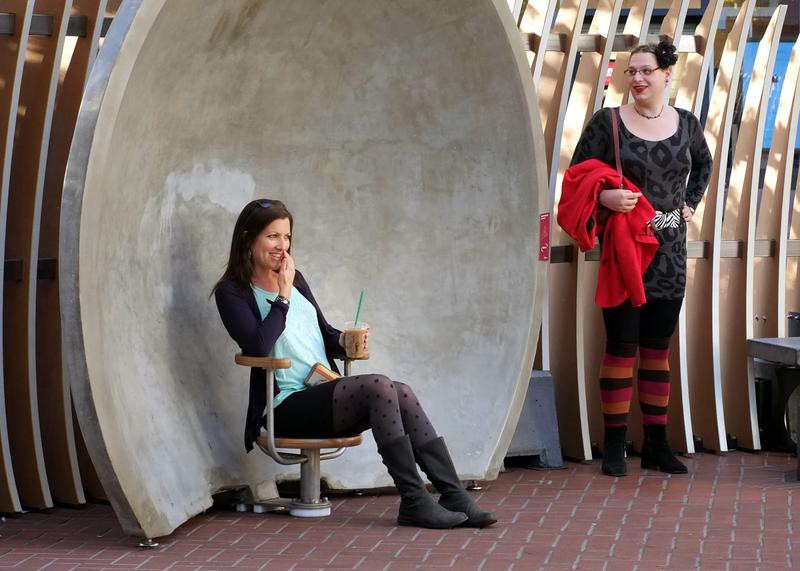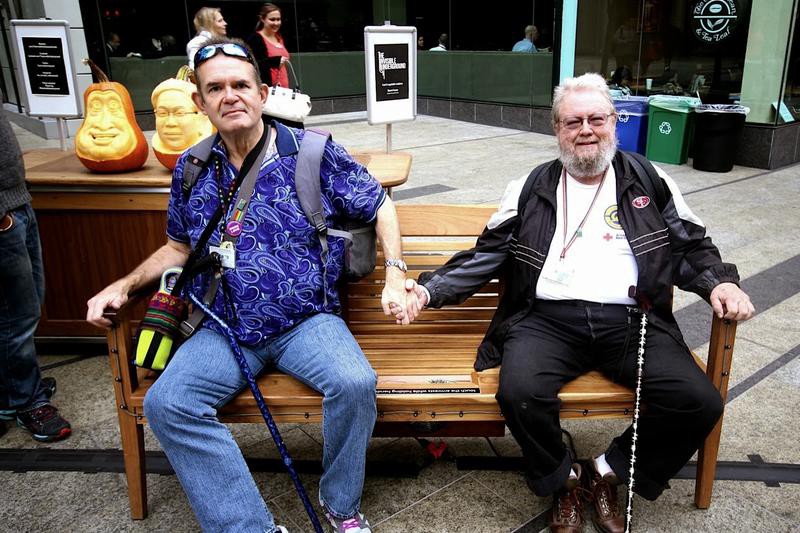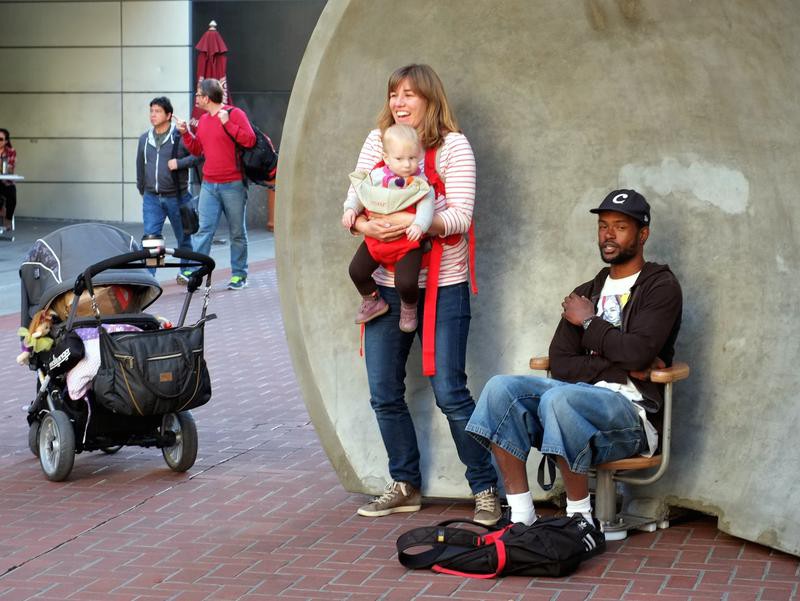

“I’m obsessed with the idea of the street as a public asset,” Jeff Risom of Gehl Architects told me. Streets amount to roughly 20 to 30 percent of the space in cities and typically 80 percent of their open spaces. To Risom, this means that a third of cities are underutilized. He wants to change this, using San Francisco as a key testbed.
The San Francisco project came out of Gehl’s work on Market Street–a key transportation corridor for the city. Up against a lot of competing transport interests, while at work the architects soon found some deep cultural and social differences too. “There is a lot of homelessness, but it also runs through the Financial District,” Risom said. “Twitter has opened its HQ there and there are a lot of other new developments. It’s a complex, dynamic street that crosses five or six very different neighborhoods.” Gehl was tasked with answering transport questions, but in talking to people who used the street the architects found that patrons wanted it to be safer, more lively and more inviting. Transport didn’t figure. So there were two lists: the project’s largely transportation-based goals and what the public wanted. And they didn’t line up.
Gehl talked to the mayor’s office, and cooked up the idea of Living Innovation Zones; spaces to try out something new in the streets. This would be a crowdsourced, crowdfunded campaign which, in Risom’s words, offered the people “a canvas to make the type of place you said in your meetings you wanted.” Gehl also teamed with the Exploratorium to see if they could bring some open playfulness to the sidewalks of their hometown. They conducted some community engagement experiments to find out what people wanted.
“It was pretty simple,” Risom said. “They want more spaces to spend time along the street. So we set some success criteria: It needs to encourage social interaction, it needs to invite the thousands of people who walk by every day to stop and spend time on the street. We want people to recognize [streets] as a place to meet, not just drive through. We want it to be lively after dark after some of the businesses close. And we wanted it to be inclusive, be welcoming for young and old, resident and visitor, white, black, whichever socioeconomic group.”

The result was a new, playful, sheltered seating area designed with large parabolas at opposite ends of the sidewalk. They are known as sound dishes at the Exploratorium, and have been copied by science museums the world over, but aren’t the sort of thing you’d expect on the street. They reflect sound. “If you’re walking across the sidewalk, you might have someone’s voice in your ear, or you’re looking over and see someone sitting alone in this parabola, but having a conversation, so you’ll wonder what is going on,” said Risom.
“In the spirit of Silicon Valley, we wanted it to be hackable. We wanted people to feel they could be inspired and plug other ideas into it,” he added. Another group came up with a sort of singing bench. Again, a development of an exhibit familiar to visitors of the Exploratorium or its many copy-cat institutions around the world; to play a melody, you have to complete a circuit by touching each end of the bench, but you can’t do this unless you are two people, so you have to hold hands.

As Risom said, the Zones are “kitsch, cheesy stuff, but it’s a way for strangers to meet and interact. It’s an excuse to goof around.” It’s the sort of play you go to a science museum for, but disruptive in a totally different way on the street when placed by a bus stop. They found all sorts of interesting interactions sparked by the Zones. People oftentimes feel embarrassed if they don’t know how they work, so someone else will tell them what to do. “Or we’ve witnessed people, where someone asks how it works, someone tells them but it’s kind of wrong, and a third person overhears and says, “‘Well, actually”¦ ‘ By virtue of placing these dishes and providing some seats next to them, we created a platform for social interaction,” he said.
Bucking a trend toward anti-social urban design in many cities, Risom says they’ve been keen to foster a sense of coexistence with the Zones. Instead of removing opportunities for what might be called “anti-social behavior,” they aim to invite the sort of social life people do want. “Then it’d be okay if there is some anti-social behavior, because it won’t fill up so much space in your conscious,” said Risom.
Looking ahead, Risom has loads of other ideas, but a key point of the project is to act as a pilot, an invitation for the people of San Francisco to see the possibilties of the space around them differently so they can come up with their own designs. The next stage will involve more work with local community groups to ensure that everyone feels they have a say. So, as to what happens next, watch that space.


How We Get To Next was a magazine that explored the future of science, technology, and culture from 2014 to 2019. This article is part of our Metropolis section, on the way cities influence new ideas–and how new ideas change city life. Click the logo to read more.

